Less than half of Karachi reaches 8.5m but don’t speculate: census chief
The reporters covering a briefing by Pakistan’s chief census commissioner were ready to tear him from limb to limb over that magic number that everyone in Karachi has been dying to hear: What is our population?
But the commissioner, Naeemuz Zafar, was far too clever, and calmly said that work was still underway and it was not fair to trade in the dubious and politically charged exercise of throwing guesstimates around the room.
What he did offer at the briefing held at the provincial bureau of statistics office on Saturday was this:
So far, Sindh has 31.4 million people and the count continues.
In Karachi, less than half the work has been done. It was partly delayed because of the local government elections. So far, 2.9 million housing units have been listed in Karachi (this counts shacks and bungalows, flats and informal settlements). The population so far is 8.5 million (and this is not the final count at all).
There are 2,000 census blocks in Sindh whose data has not entered the digital zone or they are a work in progress. We are expecting the number to go over 10 million, he said.
When reporters pressed him to give an estimate of the final count for Karachi, but he did not get one. This is dangerous because in Karachi’s case density matters. You cannot just double or triple a number and think that it is close to the truth. If we wanted to work on estimates, then it would be easy, said spokesman Sarwar Gondal, who accompanied him.
- Pakistan is divided into 185,509 census blocks (a block is 200-250 houses)
- 60% of the census count across Pakistan has been completed
- So far 140 million people have been counted in Pakistan (this is not a final number)
- 40 million housing units have been geotagged across Pakistan
Sindh has 44,000 census blocks and 22,000 enumerators are working right now
In Sindh, more than 9.7 million households have been geotagged so far and the listing continues. Out of the 9.7m households, enumeration has been completed in 6,153,350 households and from this 31,395,366 people have been counted.
There was a three-year delay to the 2017 census because Sindh had objections. And so, when the seventh census was approved by the Council of Common Interest in 2021, they said the count should be held as soon as possible and with the best tech. The aim is to count everyone—Afghans, Bengalis, Burmese including. The mantra is measure to manage which is why, in Pakistan, representation and resource management or allocation are joined at the hip. There has unfortunately been more political talk than development talk when it comes to the hot topic of the census.

The work on this digital census began two years ago. The previous population counts were with paper and pencil and it took two years before you’d even see the results. The census forms would be filled in and then sealed and loaded on to trucks that were dispatched to a secret location where they would take months to tabulate after being scanned.
This time round, the enumerators are working on tablets. The data is almost real-time. Suparco and the NTC and Nadra are plugged in to provide maps and data security, transfer and storage. The tablets are also supposed to work offline because connectivity can be patchy in some areas. And when an enumerator approaches a data zone, the data synchs. The dashboard is on a VPN or intranet and the tablet hardware and software are secure.
The tehsil is ground zero for the census counting, which the Pakistan Bureau of Statistics calls a “census district” (which is different from a zila or administrative district). The district’s assistant commissioners play a key role and signs off on the work.
The timeline of the 2023 digital census
- Jan 21, 2023: Enumerator training wrapped up
- Feb 20, 2023: Self-enumeration opens on the portal (was supposed to last till March 1)
- March 10, 2023: Self-enumeration closes. Listing process started
- March 12, 2023: Enumeration starts in areas where listing was completed. Individual counting started. During listing, enumerators geotag structures. (*The date has been corrected to 2023)
The enumeration work should end by April 4, so roughly nine to ten days are left. “Some areas are left but it has been done by and large,” said Zafar. “Sixty percent of Pakistan has been counted. The progress has been satisfactory. The work has been smooth.” The commission hopes to share the data by the beginning of April.
According to Zafar, for the first time ever in the history of Pakistan a census will be documenting the economic establishments: houses, offices, shops, mosques, schools, jails, autaqs, health units, post offices. It is using the International Standard Industrial Classification or ISIC to geotag them. So for example, if you want to know where one type of livestock breed is found you previously only had anecdotal evidence but now you will have actual data. This can be exploited for planning. None of the data can be changed and everything is logged, even how long an enumerator spends at a house.
Sindh had concerns that the count was not being done properly. So the assistant commissioners were given access to the dashboard so they can compare the data with what they know to be ground reality. The hope is that transparency will allay suspicions. A yellow icon means a house has been geotagged in the census block and a green icon means it has been enumerated.
Reporters said that even Bilawal Bhutto had said he had no idea what was happening. Zafar replied that they had offered briefings but the foreign minister had a busy scheduled. They were able to liaise with the Sindh chief minister more and agreed that his demand that the district administration have access to the data.
A reporter asked how the flood-displaced people would be counted as they were not at their homes. To this Zafar said that they were being counted where they were and being asked if they had been displaced in the floods. This will be a separate column which will be given to the provincial administration.
A rather skeptical reporter followed this up with this: To aap kiya pathhar ko geotag kar rahe hain? Are you geotagging stones for the flood-displaced people? “If people were displaced and in a tent basti, with some relative, temporary, wherever they tell us…Because we are asking them: Have you migrated because of the flood in 2022, tell us. If I’ve come from Sehwan, Dadu, Khairpur, that will be documented, perhaps the person is sitting in Hyderabad. There will be a table for migration. Then it is up to the provinces.”
He was asked about people who are live in Karachi but have a different permanent address on their CNIC elsewhere in the country. “The de jure method is being applied,” Zafar responded. “The philosophy is that if my domicile is Karachi but I am living in Islamabad, it should not make a difference. I am using Islamabad’s resources. So your permanent address won’t matter. You will be counted where you are. Yes, when it comes to an election, and the voter list is issued, then you have a choice where you want to cast your vote.”
A reporter pointed out that paper forms are still being filled. The commissioner said that it is a violation. They had written thrice to the provinces to stop this. The census counters are not daakias; they have been trained to use the devices. The district administration must discourage them.
After the whole count one day will be dedicated to the homeless. An Afghan who may have many identities, is also being counted. Stateless people too. And when someone asked about Nadra’s data, the commissioner replied that if Nadra’s data was suitable for all of Pakistan, then why would they have undertaken a census in the first place. If Nadra had registered all of Pakistan, then why hold a census. “We are not working on the basis of B-forms or CNICs,” he said. In the 2017 count, there was a limited level of verification with Nadra data and that was the biggest objection people had. That is why they have not done Nadra verification this time. “Nadra’s data can be a subset of the census data.” When the reporter pressed him about how many B-forms existed, he said he was not supposed to know that number.
What about people who the census teams can’t reach? Indeed, said the commissioner, the district administration can tell us that the count cant be held because of security issues or snow. So the census teams will go in May May or later when access is restored. But since this is likely to be just a small percentage of areas, he did not think it is something to worry about.
When someone asked about people refusing to be counted, Zafar said that actually people had wholeheartedly taken part. It was actually some “posh” areas which were resisting. And they could but won’t take action against them because it isn’t feasible to prosecute 10,000 people. In the grand scheme of things, this was a small number.
For the latest news, follow us on Twitter @Aaj_Urdu. We are also on Facebook, Instagram and YouTube.





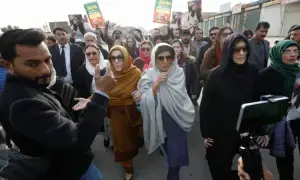
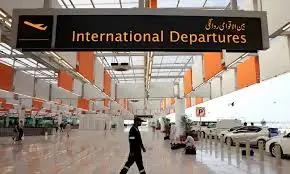
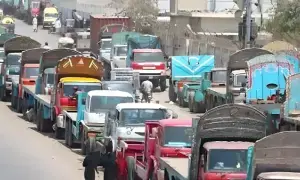
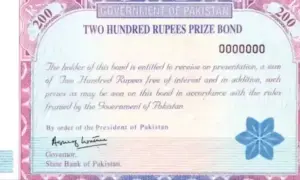

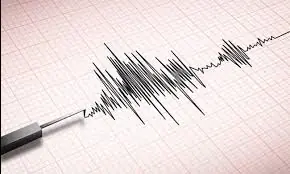
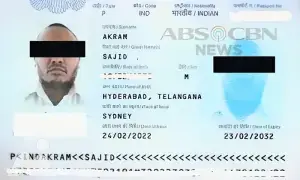
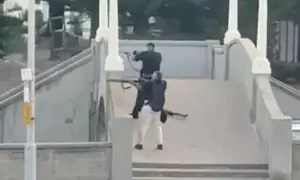
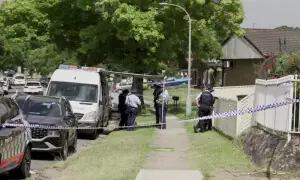


Comments are closed on this story.